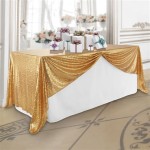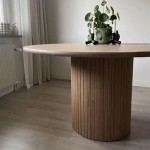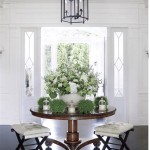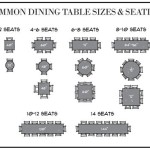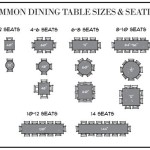How To Make A Table Runner
Table runners offer a simple yet effective way to elevate a dining table's aesthetic, whether for everyday use or special occasions. Creating a custom table runner allows for personalized design choices, ensuring a perfect match with existing décor. This guide provides comprehensive instructions for crafting a table runner from start to finish.
Choosing Your Fabric
The first step involves selecting an appropriate fabric. Consider the following factors when making this decision:
- Durability: Opt for a durable material, particularly for frequent use. Linen, cotton canvas, and polyester blends are suitable choices.
- Aesthetics: Choose a fabric that complements the room's décor and the desired ambiance.
- Ease of Care: Consider how frequently the runner will require laundering. Machine-washable fabrics offer convenience.
- Drape: The fabric's drape affects how it hangs and folds on the table. Test different materials to determine the desired effect.
Measuring and Cutting
Accurate measurements are crucial for a well-fitting table runner. Follow these steps:
- Table Length: Measure the length of the table.
- Desired Overhang: Decide how much fabric should hang over each end of the table. A standard overhang is between 6 and 12 inches.
- Calculate Fabric Length: Add the table length and the combined overhang from both ends to determine the total fabric length.
- Desired Width: Determine the desired width of the runner. Standard widths range from 12 to 18 inches.
- Seam Allowance: Add 1 inch to both the length and width measurements for seam allowance.
- Cutting: Using sharp fabric scissors, cut the fabric according to the calculated measurements.
Hemming the Edges
A clean hem provides a professional finish. Here's a step-by-step guide:
- Ironing: Iron the fabric to remove any wrinkles.
- Folding: Fold over ½ inch of fabric along each edge and iron the fold to create a crease.
- Second Fold: Fold the edge over another ½ inch, enclosing the raw edge, and iron again.
- Pinning: Secure the folded hem with pins.
- Sewing: Using a sewing machine or needle and thread, stitch along the inner folded edge, securing the hem.
Adding Decorative Elements (Optional)
Once the basic runner is complete, consider adding decorative elements to enhance its visual appeal. Here are some possibilities:
- Trim: Applying decorative trim, such as fringe, ribbon, or lace, along the edges can add a touch of elegance.
- Appliqué: Fabric appliqués can create intricate designs or add personalized motifs.
- Embroidery: Embroidered details, whether hand-stitched or machine-made, can add texture and visual interest.
- Painting: Fabric paint allows for custom designs directly onto the runner.
- Stenciling: Stencils provide a simple way to apply repeating patterns or intricate designs.
Pressing the Finished Runner
A final pressing completes the process and ensures a crisp, polished appearance. Focus on these points:
- Ironing Board: Use a clean ironing board.
- Temperature Setting: Set the iron's temperature according to the fabric type.
- Pressing Cloth: Consider using a pressing cloth to protect delicate fabrics.
- Steam: Steam can help remove any remaining wrinkles and set the final shape.
Caring for Your Table Runner
Proper care maintains the runner's appearance and prolongs its lifespan. Follow these guidelines based on the chosen fabric:
- Washing: Follow the care instructions specific to the fabric. Some fabrics may require hand washing, while others are machine washable.
- Drying: Air drying is generally recommended to prevent shrinkage or damage. If machine drying is necessary, use a low heat setting.
- Ironing: Iron as needed to maintain a crisp appearance. Follow the ironing instructions for the specific fabric.
- Storage: Store the runner flat or rolled to prevent creases and wrinkles.
Choosing the Right Materials
Using quality materials contributes to a more durable and visually appealing finished product. Consider these factors:
- Thread: Choose a thread color that matches the fabric or complements the design. High-quality thread ensures durability.
- Scissors: Sharp fabric scissors provide clean cuts and prevent fraying.
- Measuring Tape: A flexible measuring tape ensures accurate measurements.
- Pins: Use sharp pins that hold the fabric securely without damaging it.
- Iron: A quality iron with adjustable temperature settings is essential for pressing.

Beginners Table Runner Very Detailed Instructions

How To Make A Reversible Table Runner For Beginners

One Hour Version Of The 10 Minute Table Runner Super Mom No Cape

How To Make A Table Runner Best 2 Methods Treasurie

How To Make A Fabric Table Runner Easy Diy Home Sewing Project

Nancy Zieman The Blog No Hassle Table Topper Sewing Tutorial And New Wildflower Boutique Fabrics

Tutorial How To Make A Simple Table Runner Sew My Place

How To Make A Table Runner An Easy Step By Guide Quilting Life

How To Make A Farmhouse Table Runner Well Purposed Woman

How To Make An Easy No Sew Fringed Table Runner Oregon Cottage
Related Posts

